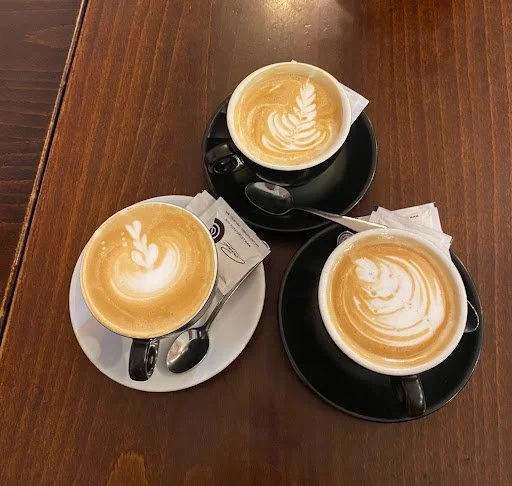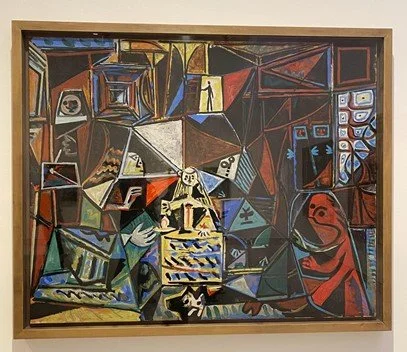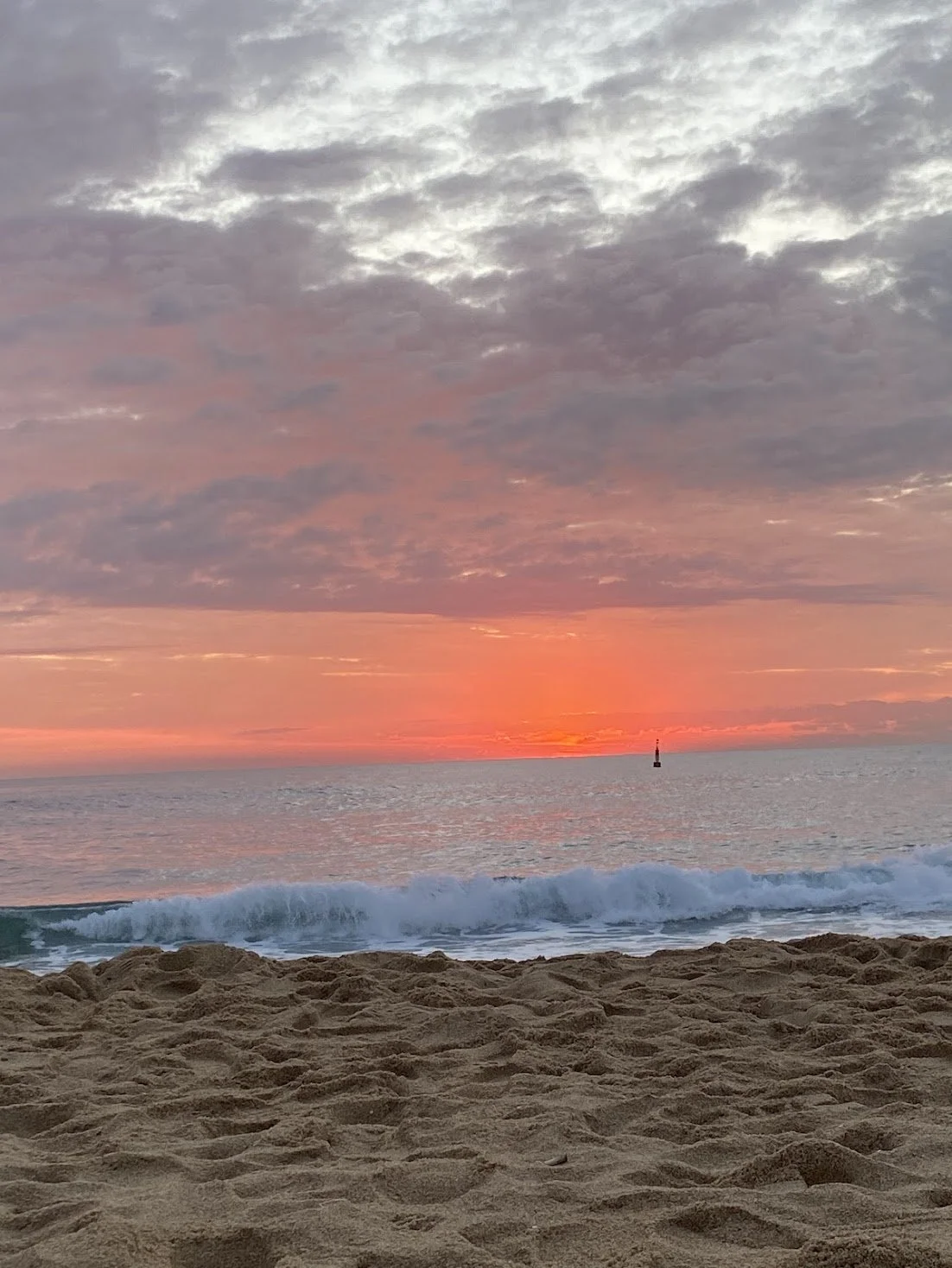A Semester Abroad in Barcelona
¡Buenas y qué tal from Barcelona! My name is Tal, and I’m a Junior at Barnard studying English & Human Rights and minoring in Spanish/Hispanic Cultures & Urban Teaching. This semester, I’ve been studying abroad with CASA Barcelona (Consortium for Advanced Studies Abroad). It has been a wonderful semester & I’m here to share a little bit about my experience abroad!
How did I pick my program?
Barnard Study Abroad has a list of approved programs for study abroad, which generally map onto Barnard’s curriculum and will transfer to the degree. They have over 120 options—from language immersion in Spain to “SIT Study Abroad Nepal: Development, Gender, and Social Change in the Himalaya” to traditional exchange programs at universities.
During my sophomore year, I went through the approved programs, making a list of my top choices. Barnard study abroad also offers program evaluations from returned students, so I looked through what former Barnard students had to say about different programs. I knew I wanted my study abroad courses to count for my Spanish minor, and I wanted the opportunity to immerse myself in a city, language, and culture for the semester. I went with CASA Barcelona because of students’ rave reviews, guaranteed housing in a dorm, the program size (~30-50 students), being able to take classes at University of Barcelona (UB), and having a volunteer/internship component.
My Courses Abroad
Students in my program all pretty much take five courses: one we all take together, around two at a local university, and around two within our program. All of our courses are fully in Spanish. Here are the courses I’m taking:
Language and Culture Pro-seminar: Everyone in my program takes this course. Our first three weeks here, we commuted to Universitat Autònoma de Barcelona together, where we took classes in Academic Spanish, Intro to Catalan, and the History/Culture of Catalonia and Spain. The Catalan portion was really fun, as we were all doing a “survival course” to learn the language spoken in Barcelona/Catalonia. It was also awesome to get a speed overview of the history of Spain & Catalonia, learning about medieval history of Spain, Gaudí, the Spanish Civil War, Franco Dictatorship, and more, so we could understand the history and geography of the location we’re studying in. While this course was quite intensive (~9am-5pm every day for 3 weeks), I appreciated how much I learned, and how we all bonded and made friends in the first weeks of the program!
Picasso, Miró, y Dalí: In this class, we learn about the lives and artwork of Pablo Picasso, Joan Miró y Salvador Dalí, and the history and ecosystems they existed within. We learn about their major art pieces, the trajectory of their careers, and important historical events & changes within the art world they existed in. We have class debates/discussions about identity, the role of the public in art history, accessibility, how art shapes history and politics, and more. For our final project, we have to visit each of their museums in Spain (with travel and museum entry subsidized), and research and critique two of their works in depth. This is my favorite class—I’ve never taken an Art History class before, and it is so fun! I also love to draw each art piece we’re learning about as our professor lectures—here are some of my class notes!
Historia y Memoria (History and Memory): This class is taught by the director of our program, who is also a history professor at UB. It is about historical memory, especially in the context of Spain and Europe. Each week we have one class that’s a lecture from our Professor, ranging from theories in history & memory to the Spanish Civil War & Francoism. The second class, we have all read the same reading and have written a mini essay summarizing and responding to it. In class, the professor talks through what different students have written about, and we have a sort of discussion together. This class has been fascinating—we talk about types of memory, the transmission of memory through family, culture, books, and media, the politics of memory, the figure of the “victim”, transitional justice, and places of memory: museums, street names, monuments, holidays, education, etc. Also, the class is only ~15 people, and we are all in the same circle of friends, so it is so fun that we all discuss and have class together!
Antropología de Movimientos Sociales (Anthropology of Social Movements): This course is a fourth year Anthropology class at UB, and we study different aspects of social movements across the globe. First we studied collection action, reading and discussing Catalan resistance in the Pyrenees Mountains, workers movements in Madrid, and far-right movements in France. Then, we talked about mobilization, discussing the transfusion of social movements from Occupy Wall Street to the Arab Spring, creating feminist “otherwise” spaces and refusing color-blind racism with the Amsterdam Black Women, the unionizing and workers rights of delivery platform workers in Madrid and Barcelona, and precarious workers in the popular economy of Argentina. Recently, we’ve been studying the creation of an indigenous counterpublic sphere in Bolivia, as well as body politics through photography in the Kurdish Movement. The readings of this course have been so incredible (although sometimes dense to read in Spanish), and I have learned so much about different social movements across the world.
Teatro Español de la Edad de Oro (Spanish Theatre of the Golden Age): In this course, we read different plays from what’s considered the “Golden Age” of Spanish theater (the 16th and 17th centuries). This course is in the Department of Philology at UB. We have the most passionate, animated professor who loves to explain the inner workings of what theaters looked like, the gossip in the theater world, and how theater changed throughout the period. So far, we’ve read Tragicomedia de Don Duardos by Gil Vicente, Tragedia de Numancia, El viejo celoso, La cueva de Salamanca y El retablo de las maravillas de Miguel de Cervantes. I’ve taken Playwriting at Barnard and am involved in lots of theater-making at Barnard/Columbia, and it’s so fun to learn about what 16th century theater looked like in Spain!
Volunteer/Internship Placements
Everyone in my program does either a volunteering/internship placement or a research paper. Most of us chose to do internships/volunteer work, and our lovely program coordinators placed us each in incredible placements aligned with our interests and studies! While these are unpaid, they count for our pro-seminar course, and are a wonderful way to learn more about the city while getting experience in different fields/disciplines.
I have been working as an English teacher at an elementary school in Barcelona. As an Urban Teaching student, I’ve been studying to get my teaching certification, so it’s been lovely to get extra fieldwork experience abroad, and to see what public education looks like in Spain. My students are supposed to think I don’t speak any Spanish and can only communicate in English, which forces them to practice their English. I work there two days a week, and have taught lessons with bingo games, English skits, artwork making, and even dances like the “Cha-Cha Slide.” My students are the cutest EVER, and are always making me artwork. I also have accompanied them on field trips, including a day where all the second graders in Barcelona perform the same dances in a giant stadium!
I love that I’m able to get to know teachers & students in Barcelona, and get to understand the local context. My friends also love their placements; I have friends working for the Barcelona public health agency, doing archival work about the Spanish Civil War, working for environmental justice organizations, and more.
Some of My Favorite Places in Barcelona
Cafe Clasíc: This is a little bar cafeteria right on the block of our dorm that me and my friends love to be locals at. Every morning, a divine cafe con leche (latte-adjacent delicious drink) and fresh croissant only costs two euro, and we have become buds with the angels who work there (best friends!). I love being a local & chatting with the incredible owners.
Parc de la Ciutadella: This GORGEOUS park (the cover image!) is a 10 minute walk from my dorm, and has gorgeous sculptures, paths, gardens, ponds, and more. I love taking all my friends who visit here—there are usually musicians playing, people blowing bubbles, and so much whimsy. On Fridays and Saturdays, they blast music and have community salsa dancing, and my friend started to teach me!
Playa Nova Icaria/Bogatell: I live a 15 minute walk from the beach, which is so perfect and incredible. When we first got here, the sunrise was at a very reasonable 8:15am, so we walked to the beach and watched the sunrise every Monday morning! One time, me and my friends walked to the beach on a humid, warm night and danced on the sand… it was a movie.
El Born/el Barrio Gótico: This neighborhood is full of windy, small alleys with little shops, cafes, bars, and restaurants. It is so fun to wander around in and try new places, or sit on a bench and draw the gorgeous architecture and cathedrals. In this neighborhood, I’ve also gone to the Picasso Museum and a Flamenco Show!
Candy Darling: This queer bar/community space has hosted two incredible events I’ve gone to: a gorgeous free Queer Flamenco show, and a Drag Queen Saint Patrick’s Day Bingo event.
Cons/Challenges of Study Abroad
To be fully transparent, here are some of the challenges of my study abroad experience. To start, my program is a ton of work! A lot of people describe study abroad as a break from the intensity of Barnard and Columbia, but I am always very busy, with a ton of readings, essays, assignments, and amount of time in classes/volunteering. I personally am a person who loves being busy, but it certainly is very time-consuming and sometimes stressful. Additionally, study abroad can be expensive. Barnard tuition and financial aid travel with you to study abroad, but most people find that there is a significant difference in how much you spend on a day-to-day basis. Barcelona is overall cheaper than NYC, but the expenses very much add up—groceries, travel, outings, flights, visas, etc. It is definitely manageable with budgeting, saving, and deciding what you want to spend/save money on, but it is definitely something to note.
Also, I do really miss all my friends and communities at Barnard and Columbia. I do not regret my decision to go abroad, but I do get the pangs of “oh wow, I miss my world,” and wish I could be there with my friends and communities at times. It is nice, though, to build a new little life for a semester and have a break from the hustle of NYC! Finally, there are cultural barriers and differences that are sometimes difficult to navigate.
An art piece by Picasso I’m studying and researching! It’s one in his series of remixes/studies of Las Meninas. You can’t tell in this photo, but it is so huge!
The Pros/Overall Opinion!
Overall, this has been such an incredible semester!!! Our program took us on tours & four trips around Spain! It was so lovely to travel around Spain without (directly) paying for travel/housing. We went to Parc Guell, weekend trips to Valencia & Girona, and day trips to Tarragona & Caves Codorníu. These were so wonderful, and we had tour guides from the university explain different history, neighborhoods, and buildings to us!
I have made so many beautiful friends here—a few close friends I had not met before from Barnard and Columbia, and friends from other colleges. We have cooking and baking nights, hang out on the roof of our dorm, have movie nights, and at least once a week remark on the fact that we are living in heaven. My classes are incredible, and I have learned so much in different subjects, and improved my Spanish fluency so much. From Spain, I’ve been able to travel to Paris and Morocco, which have been so stunning and incredible!!! Also, the weather is gorgeous and sunny, and I did get to skip a NYC winter. I feel so lucky to have been able to have this beautiful experience, traveling, learning, and making gorgeous connections.
P.S. Some more photos from my time here:
The public library of Barcelona! I looove a public library, and have been reading my way through their English section of books.
Some of the gorgeous tiles from Parc Guell!
The huge lunar new year festival in Barcelona! There were so many stalls of Chinese food, drinks, and desserts, and there were tons of performances of different forms of dance and martial arts.
Some pictures from my door collection :)











